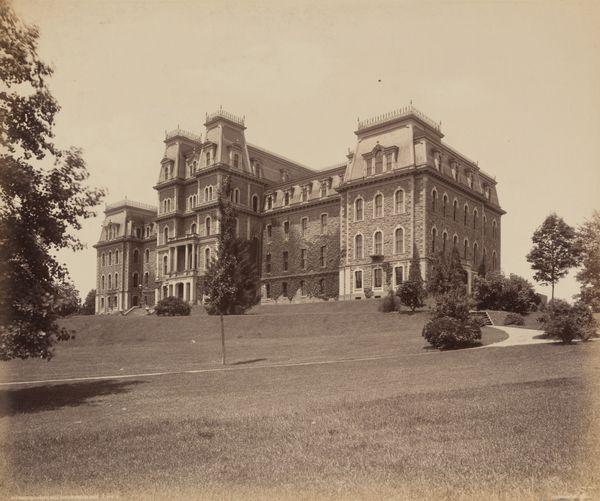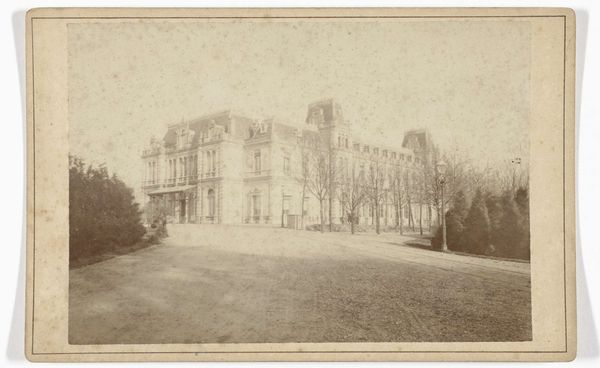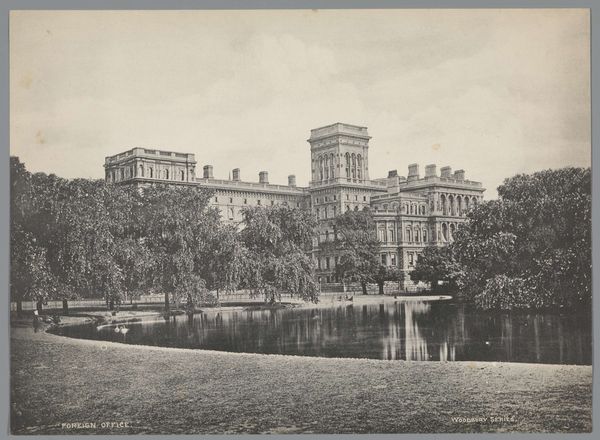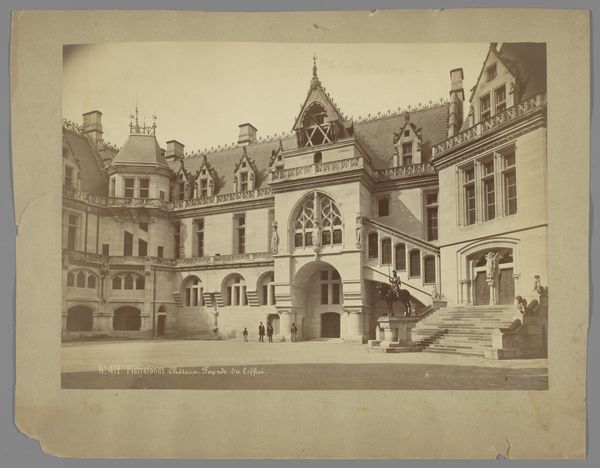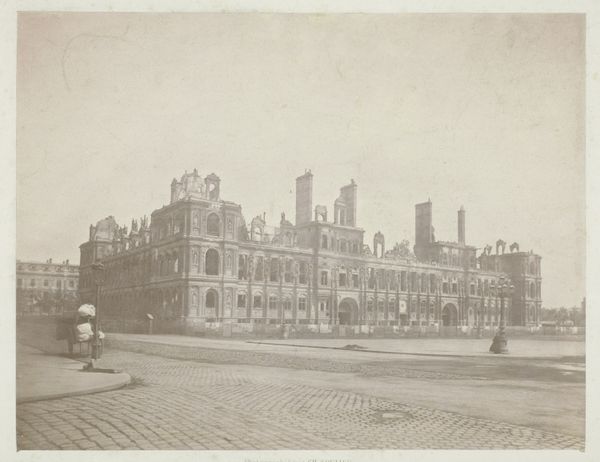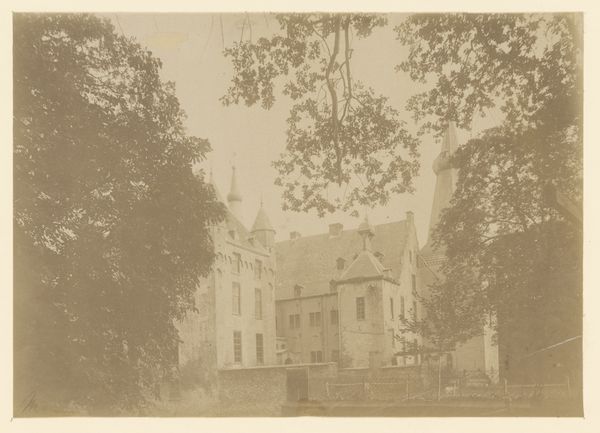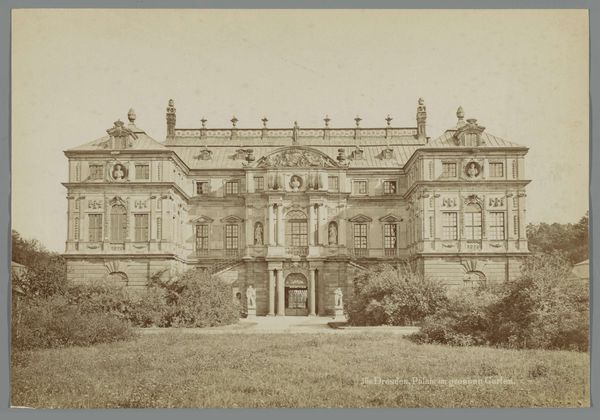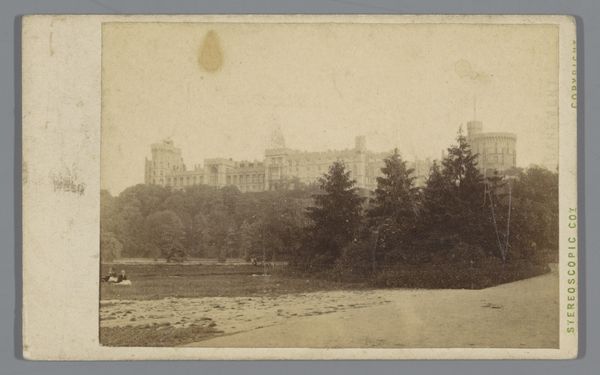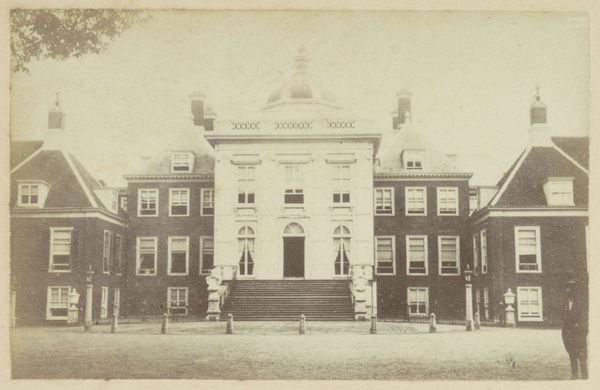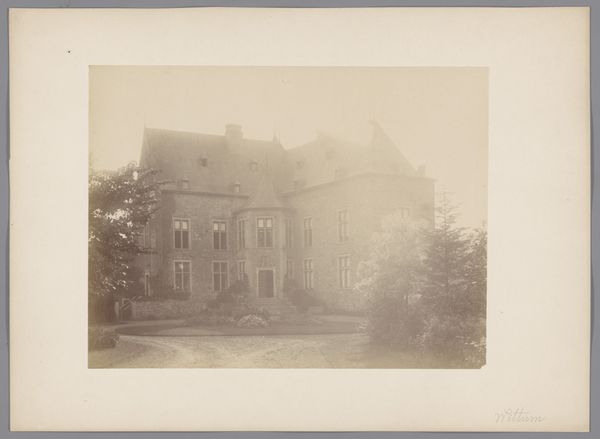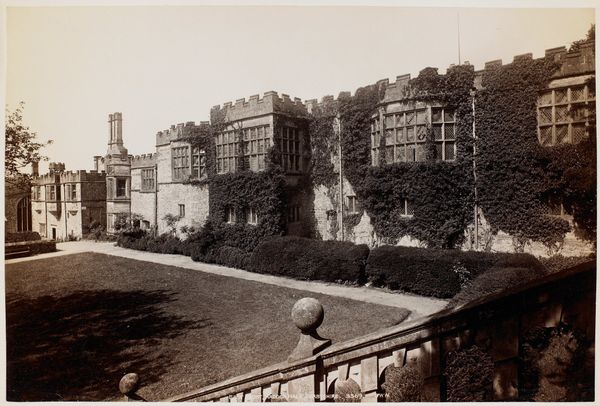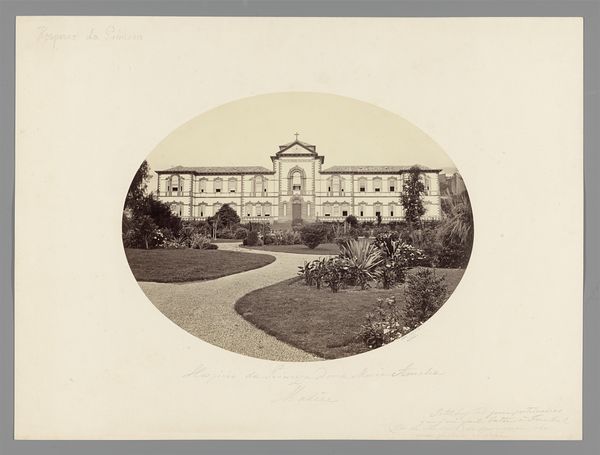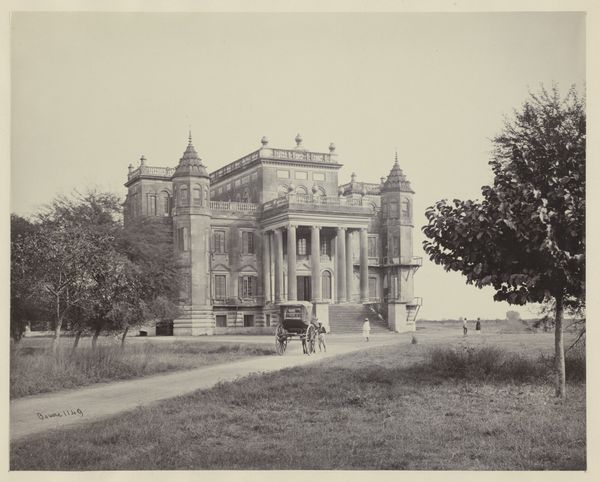
photography, gelatin-silver-print, architecture
#
16_19th-century
#
landscape
#
historic architecture
#
traditional architecture
#
photography
#
gelatin-silver-print
#
academic-art
#
architecture
#
realism
Dimensions: image: 43.4 × 52 cm (17 1/16 × 20 1/2 in.) mount: 49.7 × 60.6 cm (19 9/16 × 23 7/8 in.)
Copyright: National Gallery of Art: CC0 1.0
Editor: This is an untitled gelatin-silver print photograph taken around 1895 by William H. Rau. It depicts a grand, academic-style building on a sprawling lawn. The sepia tone lends it a nostalgic quality, but the building itself feels a bit imposing, even austere. What stories do you think this image is trying to tell us? Curator: What stands out is not merely the realism of the architecture but its careful arrangement within the frame. Consider the symbolism embedded within these institutions – symbols of permanence, knowledge, and authority. The formal landscaping contributes to this. Doesn't it remind you of certain architectural patterns, repeated through ages of cultural memory? Editor: Yes, the rigid symmetry is hard to ignore! It makes me wonder about the ideals being promoted. Is it about order and discipline, or something else entirely? Curator: Precisely. The path, how does that resonate? A path toward enlightenment, perhaps? Also, the framing through that road in front: it almost appears stage-like, set to receive something more. Do you think the emptiness creates tension, perhaps signaling that its promises remain yet unfulfilled? Editor: I hadn't thought about the emptiness as a symbolic choice, more just as an absence. But you’re right, it could represent potential or perhaps something lacking. Curator: Exactly. This photograph, therefore, functions on multiple levels: as a record, yes, but more importantly, as an encoded representation of aspirations. The very absence can become an iconic signifier. Editor: That’s a fascinating interpretation. I came in seeing a simple architectural study, but I’m leaving with a much deeper appreciation for how photographs, even seemingly straightforward ones, can be so richly layered with meaning. Curator: Indeed. It demonstrates how a single image can reflect not just a place but the values and ideals of an entire era. It carries emotional, cultural, and psychological resonance across time.
Comments
No comments
Be the first to comment and join the conversation on the ultimate creative platform.
